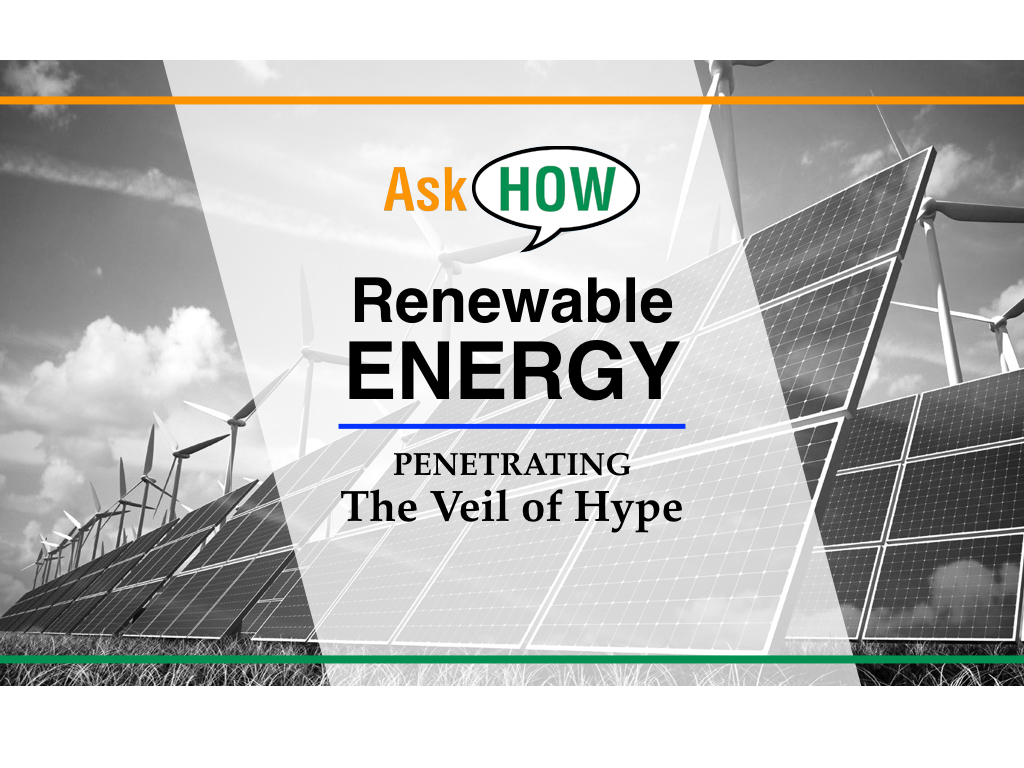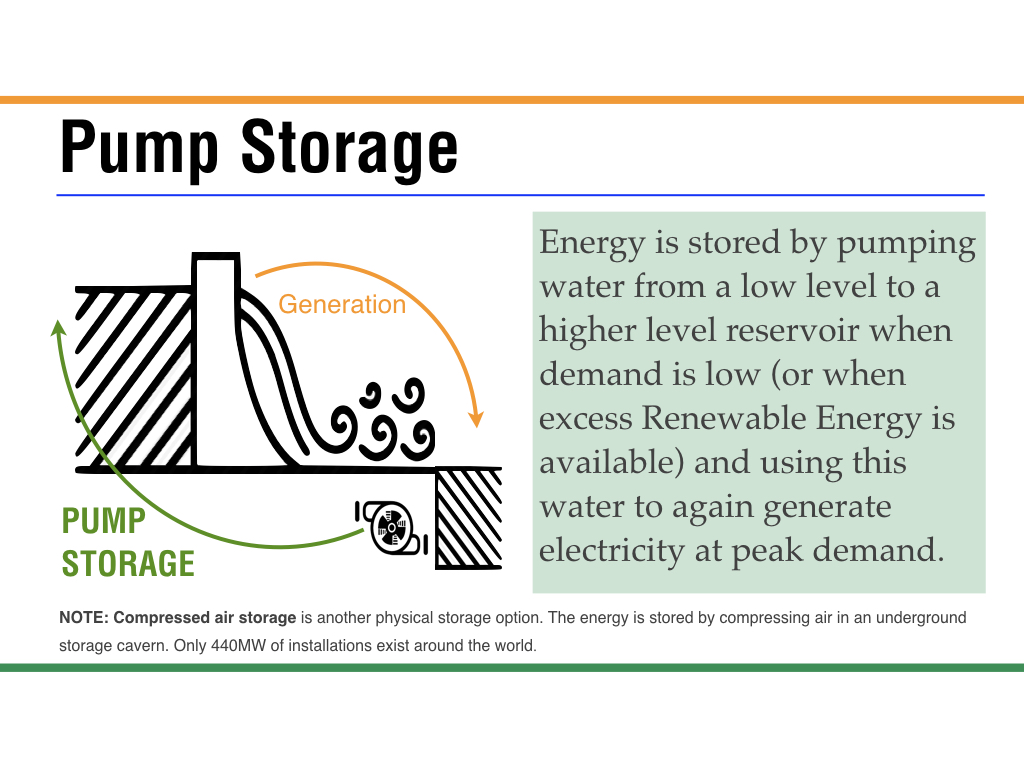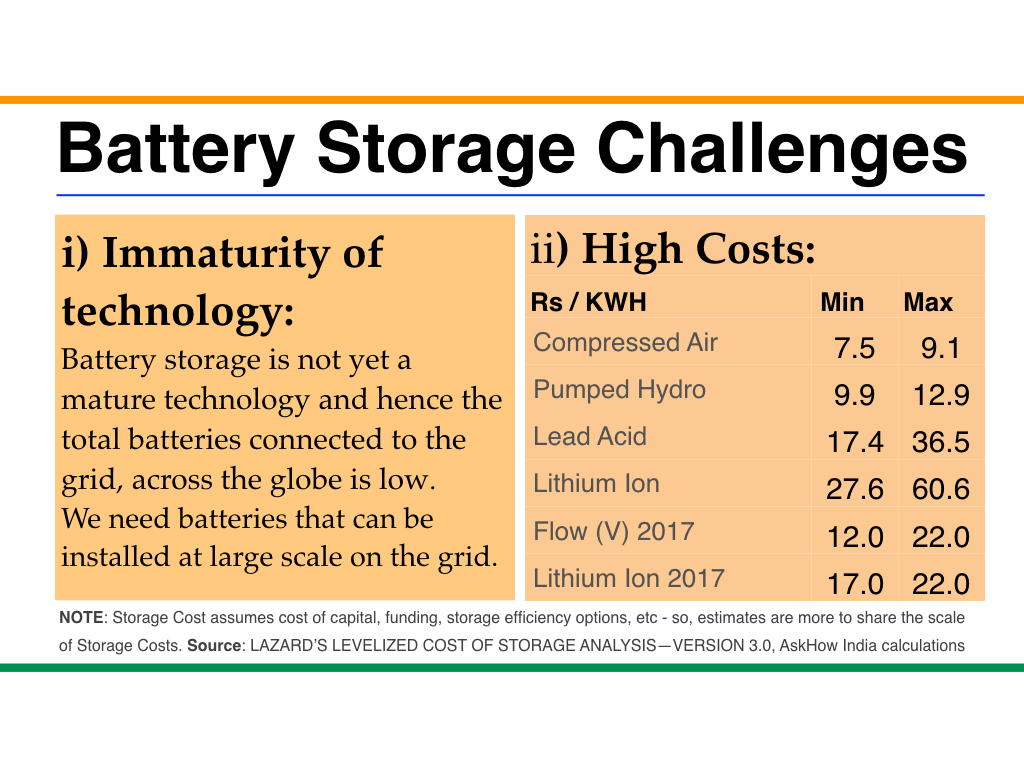Renewable Energy : Penetrating the veil of hypefeatured

Almost daily, I come across articles gushing about renewable energy. It could be a single column piece in a newspaper or a video or a blog passed on to me in one of the too many social media platforms. Some of these pieces are thoughtful and well written. However, most of them seem to be produced by partisan drumbeaters. People, who I am sure, moonlight as supporters or opponents of President Donald Trump or Prime Minister Narendra Modi, given their black and white way of seeing things.
In hyping up Renewable Energy, these articles make many conceptual and technical errors. In the process these articles end up ignoring what we call the hidden costs of renewables. I have detailed here three common types of errors of omission or commission. I end with why the hype created by these erroneous articles may be bad for the sector.
I should clarify here that I am talking mainly of Solar Photo Voltaic (Solar PV) and wind based electricity generation plants – units that generate electricity only when the conditions are right and not when the user need the electricity. Such plants are called Variable Renewable Energy (VRE) plants. Hydro power plants and plants based on waste are also classified as renewables but they are not the same as VRE as we have some control on when the electricity from these plants would be generated.
Country ABC gets xx% of its electricity from Renewables
Wind power generates 140% of Denmark’s electricity demand. You see many variations of this headline, in which we are told that Solar or Wind has generated a very high percentage of a country’s or a region’s electricity requirements. The first question I ask myself when I see such a headline is did this happen on a part of the day, or did it happen for a whole day or more? More importantly, what does the country do when the wind is not blowing (or the sun is not shining)? To answer these questions in context of Denmark, we have to understand how that country gets its electricity.
Denmark’s electricity grid is a part of Nordic Synchronous Area (NSA). A significant part of the NSA’s electricity comes from hydro power plants based in Norway. Hydro power plants are particularly good for starting and stopping and this flexibility is an excellent technical fit for the intermittent nature of wind power. Also, many of these hydro power plants are pump storage units. In such plants, any excess electricity generation can be used to pump water back up the dam and this water can be used to generate electricity again when the wind is not blowing or when the demand is high during the day. As the article points out, the electricity from wind turbines was being produced in excess of demand in Denmark and this excess was exported to neighboring countries. So, the Nordic Synchronous Area acted as the storage for Denmark’s excess electricity generation.
Most grids around the world will not have a similar level of hydro power plants and would need to invest in storage to cater to the intermittent nature of wind or solar plants. For example, California is planning to invest in 1.3 GW of stationary storage by 2024. The cost of this storage would be much higher than that of pumped storage and this will significantly increase the cost of electricity for the consumers. Furthermore, battery technologies are not yet mature.

We should also note that Denmark is small. The population of the country is 5.7 Million. When we say all of electricity of Denmark was generated by wind power, it is like saying all of electricity of Bangkok (population 5.8 Million) or London (population 8.8 Million) or Ahmedabad (population 7.02 Million) was generated by wind power.
In short while it is a positive that Denmark has managed to invest so much in wind energy, it is able to do that because it is a relatively small part of large grid that is flexible. The grid is providing reliable power generation and / or storage to back-up the intermittent nature of wind power and this reliability comes at a cost. Other grids may have to find ways to overcome the challenges presented by VRE in a different way and at much higher costs.
The electricity price in country xyz crashed to zero
Chile Is Producing So Much Solar Power, It’s Giving It Away For Free. Articles such as these, especially in not so thoughtful publications, imply that the low electricity prices are somehow a triumph of renewables energy over fossil fuel. Not so.
The demand for electricity varies through the day. The generation from solar power plants is highly correlated. That is, solar plants work at the same time of the day. Also, they do not work at same times of the 24-hour cycle such as nights, early mornings and evenings. So, when VRE capacity becomes a large proportion of the grid’s capacity, there is a surplus of electricity when the conditions for VRE generation are good. That is because both VRE and conventional power plants are available to generate electricity at those times.
In grids that have a relatively freer pricing, the price of electricity falls at the time of peak VRE generation and this is bad for VRE producers. This happens in other commodities too. For example, Maharashtra has seen years of excess production of onions, chilies and most recently eggplant. The crash in price of these vegetables forces farmers to dump their produce and suffer ruinous losses.
In grids without free pricing, the distribution companies take the financial hit and could instruct solar plants not to generate electricity in case of excess supply. My discussion with industry experts leads me to believe that it is already happening in China and to some extent even in India.
In either case, the enthusiasm of investors to back renewable energy plants will be severely reduced. This can but not have negative consequences for Variable Renewable Energy.
What about the oil rich states investing in Solar?
Periodically, my Facebook timeline gets filled up with stories about the oil rich Gulf States investing in solar plants. Indeed, many countries have invested or have announced an intention of building large solar capacities. However, these investments may not be about these oil rich countries seeing the solar writing on the energy wall as many of us would love to believe.
Varun Sivaram, in his excellent book Taming the Sun, has a very interesting passage about him speaking on the future of solar in the Middle East Electricity Summit. He describes how there was no interest in his keynote address while he spoke of solar coating on skyscrapers, slower rates of climate change and cheap power for developing world. However, he observed everyone perking up as soon he spoke about how Solar PV could offer Middle Eastern countries a way to burn less oil and gas at home.
The delegates at the conference were very interested in this proposition. If they could meet their domestic obligations using solar, they would have more oil to sell abroad! Saudi Arabia, Kuwait and Qatar provide electricity to their citizens at a very low rate and this electricity is generated from oil or Natural Gas. The more the citizens consume, the less the country has available to sell abroad. Saudi Arabia, with its relatively large population, is especially vulnerable as it consumes a quarter of the oil it produces in generating electricity for its citizens!
Of course, if the solar electricity generation in these countries could be exported to distant Europe then the world as whole would be reducing its dependence on fossil fuel. However, such exports would need large investments in transmission capacity and perhaps more dauntingly would need to leap over almost intractable geo-political hurdles.
Why does it matter?
VRE technologies have made very significant measurable progress. So if news writers take creative liberties while writing about it, what is the harm? At least this hype is about an unquestionably good thing.
The problem is that there are many challenges left to be tackled in VRE and there is a danger that decision makers, swayed by this hype, may ignore them. A dispassionate view of Renewables would allow decision makers to mitigate some of the hidden costs of VRE. For example, here is an idea on how Electric Vehicles could be used to store the electricity generated from VRE. If such mitigating measures are not taken, there is a danger that these hidden costs would fall on consumers and the government.
That will not be good for the future growth of Renewable Energy.
Author –
Yogesh Upadhyaya
(Yogesh Upadhyaya is one of the founders of AskHow India. Blogs are personal views.)



